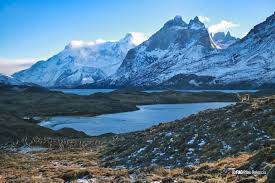Sustainable Agriculture Innovations: Securing North America's Food Future

Updated at: 2025-05-27 10:12:38 (24 days ago by Melkisedeck Leon Shine)
Sustainable Agriculture Innovations for Food Security in the Americas
Introduction: The escalating global challenges of climate change and environmental degradation necessitate a paradigm shift towards sustainable agricultural practices to guarantee food security for future generations. This article analyzes fifteen key strategies pivotal to achieving this goal, focusing on their application within the unique contexts of North and South America. We will examine these strategies through the lens of ecological modernization theory, which posits that economic growth and environmental protection are not mutually exclusive but can be achieved concurrently through technological innovation and policy reform. Key concepts include sustainable intensification, aiming to increase agricultural productivity while minimizing environmental impact, and agro-ecological approaches that prioritize biodiversity and ecosystem services.
- Sustainable Intensification and Conservation Agriculture: This approach, grounded in principles of minimizing soil disturbance, maintaining continuous soil cover (reducing erosion and enhancing carbon sequestration), and implementing crop diversification (improving soil health and resilience), directly addresses the challenge of increasing food production while minimizing environmental degradation. Examples include no-till farming and cover cropping, widely applicable across diverse agro-ecological zones in the Americas.
- Precision Agriculture and Technological Innovation: Leveraging technologies like GPS, remote sensing, and data analytics allows for optimized resource allocation (fertilizers, water, pesticides), reducing waste and maximizing yields. This resonates with the principles of precision farming, where targeted interventions based on precise data enhance efficiency and minimize environmental impact. Successful implementations in both North and South America showcase the effectiveness of this approach in various crops and farming systems.
- Agroforestry Systems and Ecosystem Services: Integrating trees into agricultural landscapes enhances biodiversity, improves soil fertility through nitrogen fixation and nutrient cycling, and contributes to carbon sequestration. This aligns with ecosystem services frameworks, highlighting the multiple benefits of incorporating natural processes into agricultural systems. Successful case studies exist across various regions, demonstrating its adaptability to diverse climates and farming systems.
- Organic Farming and Agroecology: By eschewing synthetic inputs, organic farming promotes biodiversity, improves soil health, and reduces the environmental impact of agricultural practices. This approach aligns with agroecological principles, emphasizing the interconnectedness of ecological and socio-economic systems within agriculture. Its growing popularity in both North and South America reflects a rising consumer demand for environmentally friendly products.
- Urban Agriculture and Food Systems Resilience: Urban farming, encompassing rooftop gardens, vertical farms, and community gardens, reduces transportation costs and emissions, improving food access and promoting local food systems. This approach contributes to urban resilience by enhancing food security and fostering community engagement. Initiatives in major cities across the Americas demonstrate its growing importance.
- Hydroponics and Aquaponics: These water-efficient soilless systems offer year-round production, reduce water consumption, and eliminate the need for synthetic fertilizers, aligning with the goals of sustainable intensification. Their adaptability to urban and rural contexts makes them valuable tools for enhancing food production while conserving resources. Successful examples across both North and South America highlight the technological potential.
- Crop Diversification and Pest Management: Growing diverse crops reduces the risk of crop failure, minimizes pest infestations through natural pest control mechanisms, and promotes soil health. This approach, rooted in ecological principles, enhances both resilience and sustainability. It's particularly crucial in the face of climate change-induced variability in pest dynamics.
- Water Resource Management and Conservation: Implementing efficient irrigation techniques like drip irrigation, and adopting rainwater harvesting strategies, minimizes water waste and promotes sustainable water use in agriculture. This directly addresses the growing concerns of water scarcity, particularly in arid and semi-arid regions of the Americas.
- Integrated Pest Management (IPM): Employing IPM strategies minimizes pesticide use through a combination of biological control, cultural practices, and targeted pesticide application, preserving beneficial insects and minimizing environmental harm. This approach aligns with the principles of integrated resource management and is crucial for promoting ecological balance.
- Biodiversity Conservation and Ecosystem Services: Protecting native species and habitats maintains biodiversity, ensures ecosystem services, and enhances resilience in agricultural landscapes. This underscores the critical link between agricultural practices and overall ecosystem health.
- Agritourism and Public Engagement: Engaging consumers through agritourism promotes understanding of sustainable agricultural practices and supports local farmers, fostering a connection between food production and consumption. This strengthens societal support for sustainable agricultural transitions.
- Farmer Education and Capacity Building: Investing in farmer education and training programs equips farmers with the knowledge and skills necessary to adopt and effectively implement sustainable practices. This empowers farmers to be active participants in the transition to sustainable agriculture.
- Collaborative Networks and Knowledge Sharing: Facilitating collaboration and knowledge sharing among stakeholders (farmers, researchers, policymakers) accelerates the adoption and refinement of sustainable agricultural practices. This promotes innovation and adaptability.
- Policy and Regulatory Frameworks: Supportive policies, incentives, and regulations created by governments are crucial for creating an enabling environment for the widespread adoption of sustainable agricultural practices. This emphasizes the crucial role of government in facilitating broader systemic change.
- Consumer Demand and Market-Based Mechanisms: Consumer awareness and demand for sustainably produced foods drive market forces to incentivize sustainable practices. This highlights the vital role consumers play in influencing agricultural production systems.
Conclusion and Recommendations: Addressing the complex interplay of food security and environmental sustainability in the Americas demands a multi-faceted approach. The application of sustainable agricultural practices detailed above, informed by ecological modernization theory and agroecological principles, offers a pathway towards achieving both goals. Further research should focus on comparative analyses of the effectiveness of different sustainable intensification strategies across diverse agro-ecological zones and socio-economic contexts. Policy recommendations include targeted investments in farmer education, incentives for the adoption of sustainable technologies, and the development of robust regulatory frameworks that support ecological modernization. These interventions, combined with increased consumer awareness and market-based incentives, are essential for driving a transformative shift towards a more sustainable and resilient agricultural sector in the Americas.
Reader Pool: What innovative sustainable agricultural practices do you believe hold the greatest potential for enhancing food security and environmental sustainability in your region, and why?




